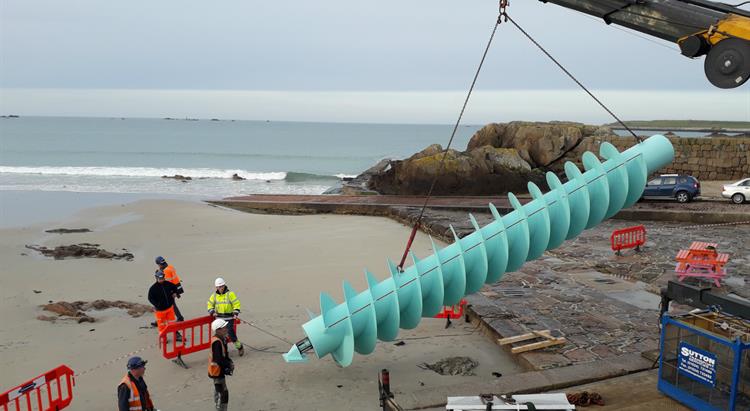12 June 2019

Islanders will have the chance to learn more about how Jersey prevents coastal flooding when a surface water pumping station opens to the public next week.
Baudrette Brook Pumping Station, by Dicq Slipway, will be open to the public on Monday 17 June between 5pm and 7pm.
The station’s two ten-metre-long Archimedes screws have just been replaced after 50 years and, before the roof is returned, islanders have the chance to find out about how the station works.
The Minister for Infrastructure, Deputy Kevin Lewis, said: “Few people will realise how large and complex our coastal defence is, and this is a great opportunity to find out about a part of the island that we all rely on, but are mostly unaware of.
“Much of the work that Infrastructure does is invisible to the public, and people are only aware of it when things go wrong. This open evening is a perfect chance for islanders– particularly young people who are considering engineering as a career – to see just how exciting our local infrastructure can be.”
Engineering students are being given the chance to see the site earlier in the day, and engineers from contractors Geomarine, who are conducting the work on behalf of Government, will be there to explain how the station works.
The replacement of the two Archimedes screws is due to be completed within the next few weeks, and is expected to be within the tendered figure of £713,000.
The drop-in is free, and islanders do not need to book in advance.
Background information
The pumping station operates during periods of heavy rainfall and high tides, to return excess water to the sea.
Rainwater is collected in a series of streams, which carry water from low-lying areas towards the coast. When the tide is out, the water runs directly from the streams to join the sea, but when the tide is particularly high, a tidal valve closes to prevent coastal flooding.
To stop the streams overflowing when the tide is high, the pumping station switches on when the tidal valve is closed. Through the station, the water is transported uphill using special screw-shaped machinery, which transports the water towards the sea.